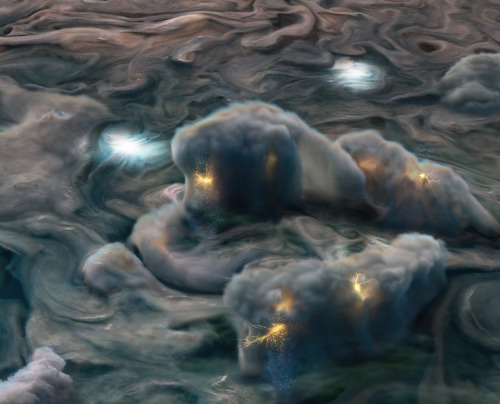Maytak Wa Tekitak Henne Anay Itak Okay.
Maytak wa tekitak henne anay itak okay.
(Braille & sign languages aren’t the same as languages.) Because of these differences, it’s easier to connect with braille than with print, but sign language is the opposite case in relation to print. As such, it’s much harder to record signed speech than with spoken tongues & would be at least part of why signed languages are much more likely to truly go extinct from the difficulty or even inability to revive them instead of reconstructing & revitalising dormant spoken tongues.
PSA: Braille and Sign Language aren’t languages.
Braille is a writing system which uses other verbal languages e.g. English or Korean. If someone who only understood French tried to read German Braille, the writing system would be almost exactly the same (with slight differences due to German’s extra letters) but the words would be foreign.
Sign is a language family or type of language. There are over 130 sign languages in the world because they all developed over time in completely separate places and they are all as different as verbal languages. Someone who uses ASL (American Sign Language) is much more likely to understand LSF (French Sign Language) than BSL (British Sign Language) even though the verbal language of America and Britain are the same.
So uhhhh stop saying that you “want to learn sign language” or that “braille is an underrated language” because neither of those are languages. Instead say “I want to learn [insert your chosen sign language likely based on your location or culture]” or “braille is an underrated writing system”
thanks!
-
 walkin-in-the-cosmos liked this · 1 year ago
walkin-in-the-cosmos liked this · 1 year ago -
 honeymon8 liked this · 1 year ago
honeymon8 liked this · 1 year ago -
 anakhronus liked this · 2 years ago
anakhronus liked this · 2 years ago -
 mellifluousoctopus reblogged this · 3 years ago
mellifluousoctopus reblogged this · 3 years ago -
 mellifluousoctopus liked this · 3 years ago
mellifluousoctopus liked this · 3 years ago -
 trabandovidas liked this · 3 years ago
trabandovidas liked this · 3 years ago -
 salty-scribe reblogged this · 3 years ago
salty-scribe reblogged this · 3 years ago -
 johnegberts1leftnipple reblogged this · 3 years ago
johnegberts1leftnipple reblogged this · 3 years ago -
 johnegberts1leftnipple liked this · 3 years ago
johnegberts1leftnipple liked this · 3 years ago -
 conartisthaiji reblogged this · 3 years ago
conartisthaiji reblogged this · 3 years ago -
 literalliterature reblogged this · 3 years ago
literalliterature reblogged this · 3 years ago -
 thegempage reblogged this · 3 years ago
thegempage reblogged this · 3 years ago -
 delphictrip liked this · 3 years ago
delphictrip liked this · 3 years ago -
 auau5n liked this · 3 years ago
auau5n liked this · 3 years ago -
 beeble-bee liked this · 3 years ago
beeble-bee liked this · 3 years ago -
 srijellyfishtempura liked this · 3 years ago
srijellyfishtempura liked this · 3 years ago -
 katsuuuuya liked this · 3 years ago
katsuuuuya liked this · 3 years ago -
 dewberrybramble liked this · 3 years ago
dewberrybramble liked this · 3 years ago -
 queen-fenestra reblogged this · 3 years ago
queen-fenestra reblogged this · 3 years ago -
 queen-fenestra liked this · 3 years ago
queen-fenestra liked this · 3 years ago -
 insomnicat44 liked this · 3 years ago
insomnicat44 liked this · 3 years ago -
 seraphinial reblogged this · 3 years ago
seraphinial reblogged this · 3 years ago -
 seraphinial liked this · 3 years ago
seraphinial liked this · 3 years ago -
 zeesqueere reblogged this · 3 years ago
zeesqueere reblogged this · 3 years ago -
 lead-acetate reblogged this · 3 years ago
lead-acetate reblogged this · 3 years ago -
 lead-acetate liked this · 3 years ago
lead-acetate liked this · 3 years ago -
 bbcfandomsuniverse reblogged this · 3 years ago
bbcfandomsuniverse reblogged this · 3 years ago -
 laymedowninsheetsoflinen reblogged this · 3 years ago
laymedowninsheetsoflinen reblogged this · 3 years ago -
 laymedowninsheetsoflinen liked this · 3 years ago
laymedowninsheetsoflinen liked this · 3 years ago -
 peronasghosts liked this · 3 years ago
peronasghosts liked this · 3 years ago -
 niamhous reblogged this · 3 years ago
niamhous reblogged this · 3 years ago -
 contemplativewomaniya liked this · 3 years ago
contemplativewomaniya liked this · 3 years ago -
 thespacesay reblogged this · 3 years ago
thespacesay reblogged this · 3 years ago -
 bbbeartrick reblogged this · 3 years ago
bbbeartrick reblogged this · 3 years ago -
 theloveoflanguage reblogged this · 3 years ago
theloveoflanguage reblogged this · 3 years ago -
 willow-of-stars liked this · 3 years ago
willow-of-stars liked this · 3 years ago -
 psykoz liked this · 3 years ago
psykoz liked this · 3 years ago -
 floof-ghostie reblogged this · 3 years ago
floof-ghostie reblogged this · 3 years ago -
 myspacepoet reblogged this · 3 years ago
myspacepoet reblogged this · 3 years ago -
 myspacepoet liked this · 3 years ago
myspacepoet liked this · 3 years ago -
 cosmicabsurdism reblogged this · 3 years ago
cosmicabsurdism reblogged this · 3 years ago
More Posts from Oroichonno
My point still stands, especially with how differently this kind of braille works from most other kinds. I think this form could possibly work with Ainu, with even the consonants being shown as above in standalone form (meaning sans the vowels) as unlike the kana form, this would have an easier time handling the phonetics inside. The ‘ye’ syllable would of course be written as -y- and then the kana e from its row. This may even hold true if a few new vowels were added into the equation, albeit in new combos. The one question is how to handle the allophony between s/sh & c (ch/ts).
Japanese Braille (and why it’s easier than written Japanese)
Okay, so I thought I’d write a post about a topic that’s really close to my heart, being a Legally Blind person: Japanese Braille.
There are 1.64 million people in Japan with an Uncorrectable Vision Impairments, 187,000 of which are listed as Blind.
Japanese Braille sounds really difficult, but in reality it’s not actually that hard! Especially once you get a few hundred Kanji in, learning Japanese Braille is honestly super simple.
First of all, a note: Japanese Braille (99% of the time, at least) is completely phonetic; there’s no differentiation between Hiragana, Katakana, and Kanji like there is in Written Japanese.
Additionally, it follows really basic patterns; with the exception of a few Punctuation-type characters, you basically only have to learn 21 basic pieces, as everything else follows basic patterns beyond that.
First off, the vowels:

All other Syllables use these same Vowels, in the same places
Following this, there comes all of the Consonants



Note that the vowels are in the exact same spot as in the AIUEO characters, just with an added mark for the Consonant.
Here is probably a good place to point out: Dakuten is marked by a single dot on the middle of the right side of the cell, placed BEFORE the character that gets changed by the Dakuten (Handakuten is the same, except the dot was lowered to the bottom right of the cell)

You’ll note that this brings us up to 14 characters…. where are all the rest?
If you’re observant, you’ll note that Ya, Yu, Yo, and Wa and (W)o are missing from the chart here. That’s because these 5 characters break the rules, just a little bit.


(Note that the Wi & We characters are only there for Ancient Japanese; don’t worry if you never learned them before, they’re gone from Japanese now)
Note that the -y- character there is placed BEFORE another consonant to make it a _y_ version of it (i.e. put it before Ka to make Kya), and that the -w- character is used to make all the irregular Little Characters (i.e. put it before Ha and you’ll get Fa).
There’s 2 more characters to learn, and they’re pretty easy.
They’re made for doubling consonants, and doubling vowels respectively

For example, putting a Sokuon before Ka makes Kka, and a Chouon AFTER A makes Aa
Anyways, that covers all the fundamentals of Japanese Braille, hopefully enabling even more people to make Blind Literacy possible, in an entire other language!
This should make writing & worldbuilding significantly easier to handle for referencing. My editor would love this. Here’s a few from my home culture: https://mongols.mrdonn.org/myths.html
https://www.culturev.com/mongol/mythology.html
Myths, Creatures, and Folklore
Want to create a religion for your fictional world? Here are some references and resources!
General:
General Folklore
Various Folktales
Heroes
Weather Folklore
Trees in Mythology
Animals in Mythology
Birds in Mythology
Flowers in Mythology
Fruit in Mythology
Plants in Mythology
Folktales from Around the World
Africa:
Egyptian Mythology
African Mythology
More African Mythology
Egyptian Gods and Goddesses
The Gods of Africa
Even More African Mythology
West African Mythology
All About African Mythology
African Mythical Creatures
Gods and Goddesses
The Americas:
Aztec Mythology
Haitian Mythology
Inca Mythology
Maya Mythology
Native American Mythology
More Inca Mythology
More Native American Mythology
South American Mythical Creatures
North American Mythical Creatures
Aztec Gods and Goddesses
Asia:
Chinese Mythology
Hindu Mythology
Japanese Mythology
Korean Mythology
More Japanese Mythology
Chinese and Japanese Mythical Creatures
Indian Mythical Creatures
Chinese Gods and Goddesses
Hindu Gods and Goddesses
Korean Gods and Goddesses
Europe:
Basque Mythology
Celtic Mythology
Etruscan Mythology
Greek Mythology
Latvian Mythology
Norse Mythology
Roman Mythology
Arthurian Legends
Bestiary
Celtic Gods and Goddesses
Gods and Goddesses of the Celtic Lands
Finnish Mythology
Celtic Mythical Creatures
Gods and Goddesses
Middle East:
Islamic Mythology
Judaic Mythology
Mesopotamian Mythology
Persian Mythology
Middle Eastern Mythical Creatures
Oceania:
Aboriginal Mythology
Polynesian Mythology
More Polynesian Mythology
Mythology of the Polynesian Islands
Melanesian Mythology
Massive Polynesian Mythology Post
Maori Mythical Creatures
Hawaiian Gods and Goddesses
Hawaiian Goddesses
Gods and Goddesses
Creating a Fantasy Religion:
Creating Part 1
Creating Part 2
Creating Part 3
Creating Part 4
Fantasy Religion Design Guide
Using Religion in Fantasy
Religion in Fantasy
Creating Fantasy Worlds
Beliefs in Fantasy
Some superstitions:
Read More

If only this became available in full online.
At least this can provide a flicker of hope, & this can provide possibilities of team efforts between them & the Ainu. In all of these cases, modernisation & adaptation will be needed to ensure long term survival.
Ohak imeruhu Ninociw mukke ne. Tan pitapehe pe wa pasippo orwa hepicimena ek na.
(Shallow lightning of Jupiter is mysterious. This electrical discharge is from a unique solution of water and ammonia.) The pitaeyukke (solvent) isn’t yet clear, though the water is likely the pitaye (solute) in this one as one would expect.

New results from our Juno mission suggest the planet is home to “shallow lightning.” An unexpected form of electrical discharge, shallow lightning comes from a unique ammonia-water solution.
It was previously thought that lightning on Jupiter was similar to Earth, forming only in thunderstorms where water exists in all its phases – ice, liquid, and gas. But flashes observed at altitudes too cold for pure liquid water to exist told a different story. This illustration uses data obtained by the mission to show what these high-altitude electrical storms look like.
Understanding the inner workings of Jupiter allows us to develop theories about atmospheres on other planets and exoplanets!
Illustration Credit: NASA/JPL-Caltech/SwRI/MSSS/Gerald Eichstädt/Heidi N. Becker/Koji Kuramura
Make sure to follow us on Tumblr for your regular dose of space: http://nasa.tumblr.com
